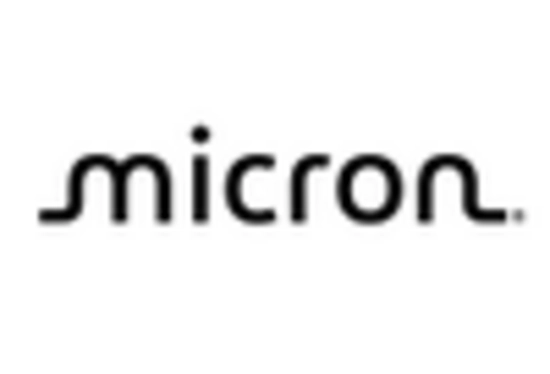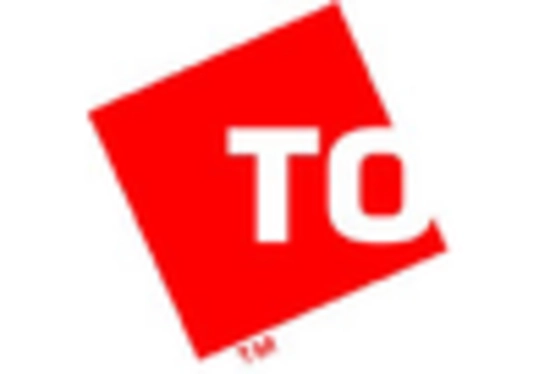Emergence of 5G Technology
The rollout of 5G technology is set to revolutionize the telecommunications landscape, enabling faster data transfer and improved connectivity. This advancement is likely to have a profound impact on the Embedded Multimedia Card Market, as the demand for high-speed data storage solutions will escalate. With 5G networks facilitating real-time data processing and streaming, embedded multimedia cards will play a crucial role in supporting these applications. The anticipated growth in 5G subscriptions, projected to reach 1.7 billion by 2025, suggests a corresponding increase in the need for efficient storage solutions. Consequently, the Embedded Multimedia Card Market is expected to thrive as it adapts to the requirements of next-generation connectivity.
Growth in Consumer Electronics
The consumer electronics market is experiencing a renaissance, with innovations in smart TVs, gaming consoles, and wearable devices. This growth is propelling the Embedded Multimedia Card Market, as these devices require efficient storage solutions to handle large volumes of multimedia content. In 2025, the consumer electronics sector is projected to surpass USD 1 trillion, indicating a robust demand for embedded multimedia cards. These cards facilitate seamless streaming, gaming, and content consumption, which are integral to the user experience. As manufacturers continue to enhance device capabilities, the Embedded Multimedia Card Market is poised for substantial growth, driven by the increasing integration of multimedia functionalities in consumer electronics.
Expansion of Automotive Electronics
The automotive sector is undergoing a significant transformation, with an increasing emphasis on advanced electronics and connectivity features. This shift is driving the demand for embedded multimedia cards in vehicles, as they are essential for navigation systems, infotainment, and driver assistance technologies. The Embedded Multimedia Card Market is likely to benefit from the projected growth of the automotive electronics market, which is expected to reach USD 400 billion by 2026. As vehicles become more connected and autonomous, the need for reliable and high-performance storage solutions will intensify, positioning embedded multimedia cards as a critical component in modern automotive applications.
Rising Demand for Smart Home Devices
The trend towards smart home automation is gaining momentum, with consumers increasingly adopting smart devices for enhanced convenience and security. This shift is driving the Embedded Multimedia Card Market, as these devices often require reliable storage solutions for data management and multimedia applications. The smart home market is projected to grow significantly, with estimates suggesting it could reach USD 174 billion by 2025. Embedded multimedia cards are essential for storing data from various smart devices, including security cameras, smart speakers, and home automation systems. As the demand for interconnected smart home solutions continues to rise, the Embedded Multimedia Card Market is likely to experience substantial growth, driven by the need for efficient and high-capacity storage.
Increasing Adoption of Mobile Devices
The proliferation of mobile devices such as smartphones and tablets is a key driver for the Embedded Multimedia Card Market. As consumers increasingly rely on these devices for various applications, the demand for high-capacity storage solutions has surged. In 2025, it is estimated that the number of smartphone users will reach approximately 4 billion, further fueling the need for efficient multimedia storage. Embedded multimedia cards provide the necessary speed and capacity to support high-definition video playback and gaming applications, which are becoming more prevalent. This trend indicates a robust growth trajectory for the Embedded Multimedia Card Market, as manufacturers strive to meet the evolving storage requirements of mobile device users.

















Leave a Comment